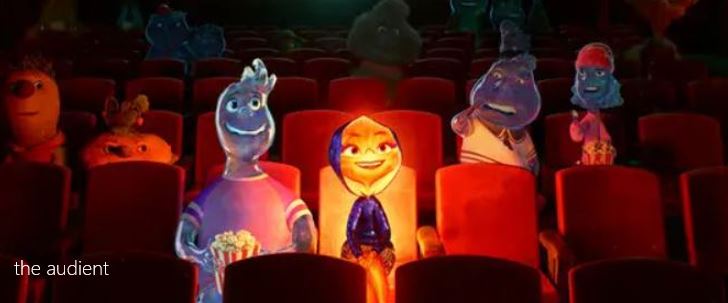
When you are an American expatriate cinephile living in Australia, you long for the sense that you are actually seeing movies around the same time as, or even before, other people. Instances of that come to feel few and far between.
And so it was that I seized an opportunity to see something fairly fresh and new Wednesday night, when I determined that Blue Ruin -- a new Kickstarter-funded indie released in the U.S. in theaters and VOD on April 25th -- was available for rental on iTunes. (My email address is still associated with the American iTunes store, which is great for renting things on an American schedule -- not so great for using iTunes gift cards given to me as gifts in Australia.)
Having only a half-dozen other 2014 movies to my credit, I sprung for the $6.99 rental. It downloaded surprisingly quickly -- more quickly than these movies usually download on our iPad -- and after kicking off the download around 7:15, I was watching by 9.
I didn't know anything about Blue Ruin except for that nebulously malevolent title, and that it was funded by a Kickstarter campaign. I didn't know, for example, that it was a revenge story, and that Jan Brady appears near the end.
But I don't really want to talk about those aspects of Blue Ruin. What I do want to discuss are its similarities to a movie that came out four decades earlier.
I may have seen Nicolas Roeg's 1973 psychological horror Don't Look Now in film classes in both high school and college, though I can only be certain of college, because I remember doing an assignment on it. I think it was both, though. I know I've seen the movie at least twice, in any case.
And though I remember a lot about it, what I remember most was the fact that each shot in the film -- and I mean each and every shot -- contains at least a snippet of the color red. It's meant to be some comment on the omnipresence of evil or the devil, or just a byproduct of Donald Sutherland's henpecked mind, as his daughter was wearing a red coat when she died.
Well, Blue Ruin does for blue what Don't Look Now did for red.
I couldn't swear to "each and every shot," but Jeremy Saulnier has definitely worked overtime to incorporate the color blue into the vast majority of his mises en scene. (Is that the correct plural of "mise en scene"?) There are large, honking instances of the color blue, like the main character's car and the brilliant blue tarp that covers a different car, and then there are the more subtle appearances of the color, like the hue cast over the character's face as he watches TV. But one thing that's for certain is that blue haunts this movie the way red haunted Don't Look Now.
Only thing is, I'm not sure if it works, exactly.
I guess my feeling is that a stunt like this is audacious the first time someone decides to do it, then tired as soon as the next person does it. Granted, 40 years should far exceed the statute of limitations on a good cinematic stunt, and I'm sure Saulnier wasn't expecting a big chunk of his audience to recognize it as an homage to Roeg's movie (which I certainly think it is). You might take that one step further and say that this main character (let's name him: Dwight Evans, played by Macon Blair) even bears a bit of a resemblance to Sutherland. That's despite his two extreme appearances in the film -- the grizzled beardedness of a homeless person and the clean-shaven tabula rasa of not being recognized as that person -- falling on either side of the mustachioed Sutherland in Don't Look Now.
The reason I'm not sure it works is that I found myself looking for the blue in every shot, and not always concentrating on the rest of the beautifully realized camerawork. That might have happened also in Don't Look Now except that I wasn't looking for the red on the first viewing, because we didn't talk about the film analytically until after we'd watched. That let me concentrate on the movie's story, or more accurately, its mood. The second viewing was when I got a chance to count all the instances of red.
The thing is, since Don't Look Now already did that, now I'm much more likely to pick up on it if someone's doing it again. I've become a critical enough watcher of films (that may be an understatement) over the years to notice right away if someone is trying to "pull a Don't Look Now." I guess you might say I've been waiting to see someone do it again since then. So I was attuned to those blue color bursts from the get go, and eventually was straining to extract the blue from every composition. It became a distraction, and I also started to puzzle about what it was supposed to mean. If the red was blood or evil or the devil or that little girl's coat, what was the blue? Depression? Literally that the main character is "feeling blue"? I'm not sure.
I guess the whole movie left me with the feeling that it was about this percentage of a really successful idea. There's something definitely indelible and unforgettable about the movie, and indeed, it does feature Jan Brady. But I guess the extent to which I wanted it to be great was not quite in sync with how great it actually was. Or maybe I was just tired of handing out four-star reviews to 2014 movies, having honored each of the last four I've seen with that star rating.
So Blue Ruin is a 3.5-star movie with a chance to move up upon further reflection.
And, it's got a lot of blue in it.

No comments:
Post a Comment